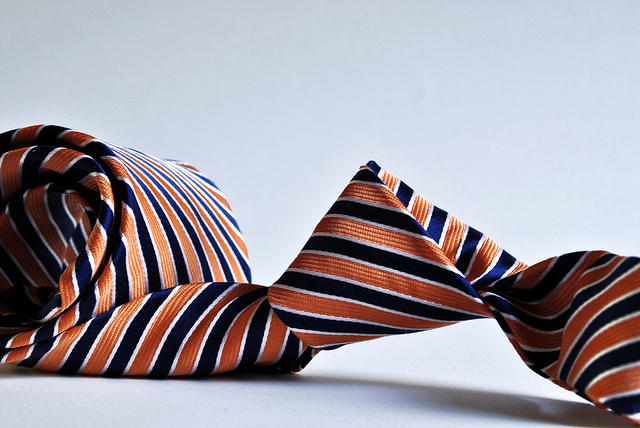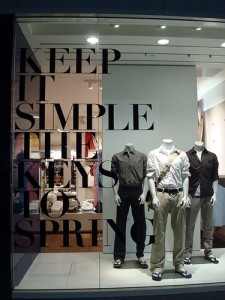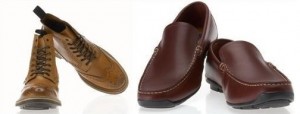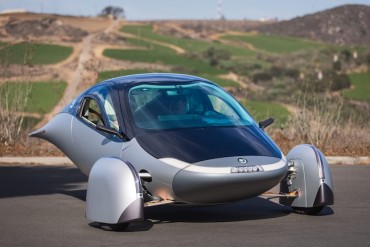
According to the Samsung Fashion Institute based on a May street survey on 2,000 male workers, only 41.4 percent of them wore formal business suits while the remaining 58.6 percent were in casual outfit. (image:michaelnpatterson @flickr)
SEOUL, Korea, Nov 08 (Korea Bizwire) – Last summer when the temperature went up over 35 degrees Celsius, it was not uncommon to see office workers wearing no tie and casual attire. This was not just limited to those working in some entrepreneurial firms but widespread among those hired in the financial services sector and state-run enterprises. Now that the hot and humid summer has gone for months, there are still male salaried workers who go to work wearing casual dress pants and shirts without a tie.
According to the Samsung Fashion Institute based on a May street survey on 2,000 male workers, only 41.4 percent of them wore formal business suits while the remaining 58.6 percent were in casual outfit. The institute said the ratio in a survey conducted five years ago at the exactly same location was 58.2 and 41.8 percent. In the 1990s, the proportion of those in business suits was more than 70 percent.
Due, at least partly, to the government’s encouragement to go to work without a tie as part of energy saving measures, more and more men don’t bother with ties and that has led to a rise in the sales of casual clothing items and accessories at the expense of neckties. For example, the sales of ties at Lotte Department Stores have declined more than 30 percent during the past five years. Its year-on-year tie sales figures have fallen 3.4 percent in 2008, followed by 4.0, 6.3, 5.2, and 11.7 percent until last year. The tie sales at Hyundai Department Store have also declined 10.8 percent from the previous year. This is the first time for the retailer to see a two-digit decrease for the past five years.
The situation is almost identical in other countries. Eric Jennings, vice president and fashion director for men’s wear at Saks Fifth Avenue New York, said, “It’s clear neckties are no long a growth business.” The annual tie sales in the United States as a whole have fallen 34 percent to US$677.7 million in 2008 from $1,030 million.

Amid a situation in which ties are going out of style, other men’s accessory items such as belts, wallets, scarves, and handkerchiefs are gaining more currency. (image:Shinsegae Department store)
Amid a situation in which ties are going out of style, other men’s accessory items such as belts, wallets, scarves, and handkerchiefs are gaining more currency. Lotte Department Store reported that its men’s accessory sales saw a growth of 36.3 percent last year, with over 20 percent growth for the past several years on average. The Trade Center location of Hyundai Department Store has opened in May this year a 500-square-meter corner specializing in men’s accessories selling cosmetics and small home appliances as well as men’s shoes and other accessory items.
Maestro, the men’s wear brand by LG Fashion, has strengthened its casual wear lines vis-à-vis formal wear by the ratio of 60 to 40, with a new Italian-style casual brand “Il Corso del Maestro” recently launched. As more and more men prefer slim-fit pants, clutch bags and backpacks are gradually replacing wallets. The sales of Daks Accessories backpacks have more than doubled this year comparing to 2011.
A similar trend toward casual style away from business formality is seen in the shoe market as well. More men opt to wear trendier shoes over dress shoes, with a notable change toward wingtip boots and loafers. According to ABC Mart, the sales of men’s wingtip boots and loafers this year have risen 30 percent and 20 percent, respectively, from last year. The percentage of men’s wingtip boots and loafers out of all shoes sold in the month of October this year was whopping 60 percent.
Wingtip boots are a style of boot traditionally characterized by multiple-piece, sturdy leather uppers with decorative perforations and serration along the pieces’ visible edges. As these are considered more stylistic and stronger in individuality, more and more fashion-conscious men choose to wear them. These were traditionally considered to be outdoor or country footwear not otherwise appropriate for business occasions, but they are now considered appropriate in most contexts. Loafers, meanwhile, are typically low, lace-less shoes. They began as casual shoes, but have increased in popularity to the point of being worn with suits. Loafers became highly popular as some fashionable office workers began wearing them with ankle-length khakis.

Samsung Electronics has long allowed its production workers to come to work with no tie and short-sleeve shirts. (image:Svadilfari @flickr)
The turning point for male office workers to leave their neckties home was given in 2008 by Samsung Group when the top management began instituting a new dress code quite unusual in Korea’s corporate culture. At the time, the company asked its workers to come to work wearing collar jackets, casual dress shirts and pants, and casual dress shoes. But it made sure to specify what not to wear including collarless shirts, jeans, khakis, and athletic shoes. Within the group, Samsung Electronics has long allowed its production workers to come to work with no tie and short-sleeve shirts. But its dress code to office workers has been strictly formal tie and suit except a few years in the mid-1990s. Although the same dress code had been practiced in other companies, it was the first time for any company to do it group-wide as a policy.
Casual attire with no tie is a great way to enhance office productivity while saving air-conditioning cost in the summer. Studies say just loosening your tie can reduce the body temperature by 2 degrees Celsius. The Ministry of Trade, Industry and Energy recommended to company and government offices to save energy by setting the air-conditioner temperature by 2 degrees, which can conserve electricity by up to 14 percent. This is equivalent to electric power running 50 fans for one hour in a 33-square-meter office running ten air-conditioners.
Only a decade ago, most office workers had to put up with heat and humidity with their business suits and ties on. But now they are confident enough to take these off and instead wear casual dresses without worrying about what other people, including their bosses, will think about them.
Lifestyle (Follow us @Lifestylenews_Korea)







